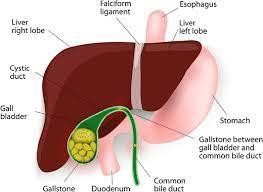A nurse is preparing to administer a blood transfusion to a client. Which of the following procedures should the nurse follow to ensure proper client identification?
Check the client's blood type and crossmatch it against the provider's orders.
Ask the client to state their blood type prior to beginning blood administration.
Compare information on the blood product to the informed consent form.
Verify the client and blood product information with another licensed nurse.
The Correct Answer is D
A. This is not a correct procedure for client identification, but rather for blood compatibility. The nurse should check the client's blood type and crossmatch it against the blood product label, not the provider's orders.
B. This is not a reliable method of client identification, as the client may not know or remember their blood type correctly. The nurse should use two identifiers, such as name and date of birth, to confirm the client's identity.
C. This is not a relevant step for client identification, but rather for informed consent. The nurse should ensure that the client has signed an informed consent form before administering blood, but this does not verify that the blood product matches the client.
D. This is the correct procedure for client identification, as it involves two licensed nurses who independently check and confirm the client's identity and the blood product information, such as blood type, Rh factor, expiration date, and serial number.
Nursing Test Bank
Naxlex Comprehensive Predictor Exams
Related Questions
Correct Answer is ["C","D","E"]
Explanation
A.The client's weight has remained relatively stable (83.9 kg to 83 kg), which does not indicate an immediate health concern compared to the acute behavioral and mental health symptoms observed.
B. While the client's neurostatus (mental status) is affected by the presence of auditory hallucinations, pressured speech, and restlessness, these symptoms are more critical in terms of immediate management than a general assessment of neurologic status.
C. Auditory hallucinations, such as appearing to listen to unseen others, are concerning symptoms indicating possible exacerbation of schizophrenia or medication non-compliance. Immediate assessment and intervention by mental health professionals are needed.
D.Pressured speechis commonly seen in mania or anxiety.Poverty of speechcan be associated with shyness, depression, schizophrenia, or cognitive impairment. Pressured speech noted along with other symptoms can indicate agitation or worsening of mental health symptoms. It suggests the client may be experiencing an acute phase of their illness, requiring evaluation and possibly adjustment of medications.
E. Restlessness, frequently getting out of the chair, and appearing tired and disheveled indicate agitation and potential agitation or anxiety. This could be a sign of increased agitation, anxiety, or distress, which needs immediate attention to prevent escalation.
Correct Answer is A
Explanation
Choice A reason:
Acetaminophen is a safer choice for pain relief in clients with cholelithiasis because it does not have significant effects on the gallbladder or biliary system. It can provide effective pain relief without exacerbating the underlying condition.
Choice B reason:
Omeprazole Omeprazole should not administer because it is a proton pump inhibitor (PPI) used to reduce stomach acid production and treat conditions such as gastroesophageal reflux disease (GERD) and peptic ulcers. It is not indicated for the treatment of pain and discomfort associated with cholelithiasis.
Choice C reason
Should not be administered
Metoclopramide Metoclopramide should not be administered because it is a medication used to treat gastrointestinal issues such as nausea, vomiting, and gastroparesis. It is not indicated for the treatment of pain associated with cholelithiasis.
Choice D reason:
Ketorolac Ketorolac should not be administered because it is an NSAID used for moderate to severe pain. However, it should be avoided in clients with cholelithiasis due to its potential adverse effects on the gallbladder and biliary system.

Whether you are a student looking to ace your exams or a practicing nurse seeking to enhance your expertise , our nursing education contents will empower you with the confidence and competence to make a difference in the lives of patients and become a respected leader in the healthcare field.
Visit Naxlex, invest in your future and unlock endless possibilities with our unparalleled nursing education contents today
Report Wrong Answer on the Current Question
Do you disagree with the answer? If yes, what is your expected answer? Explain.
Kindly be descriptive with the issue you are facing.
